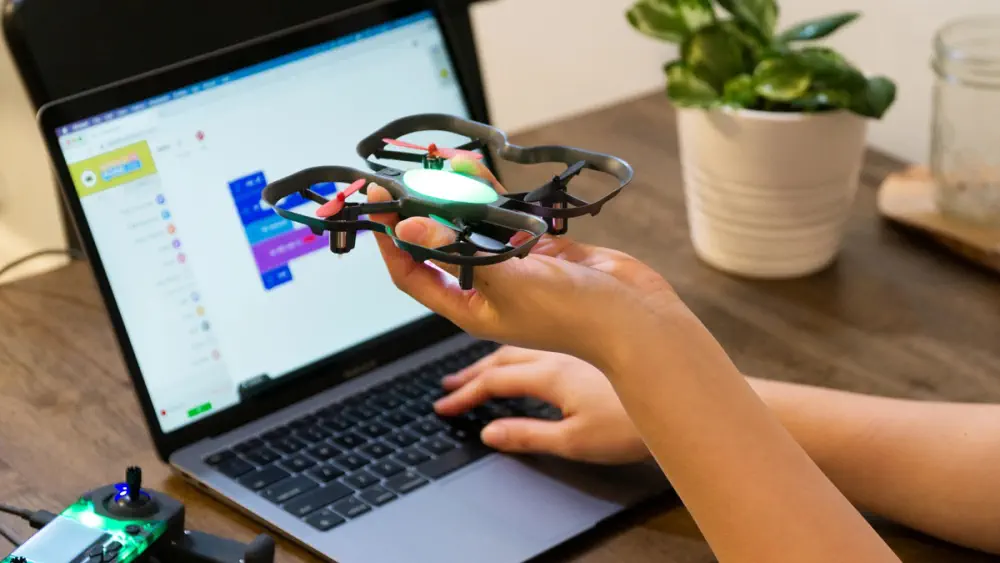- CoDrone EDU (Set of 10 Kits)
- Features a set of 10 individual CoDrone EDU kits
- Offers a programmable drone
- Excellent learning tool and a great way to learn to code
- Programming languages: Blockly and Python
- Ages: 12+
The CoDrone EDU (Set of 10 Kits) is a programmable drone, meant for learning in the classroom. Code it in Python or start from the basics with block-based coding.
Unique to this drone are its color sensors, a front range sensor, and a bottom range sensor, among others all usable in code. With a durable and safe frame, programmable lights, and access to its 7 sensors, it is an excellent learning tool and a great way to learn coding and engineering skills.
Drones are a fun and engaging way to learn coding and engineering - you're moving around, things are flying, you get to see your code come to life.
Safety is key. The teacher needs to feel confident and unafraid of the device they're using. Without safety, everything else is a non-starter. The drone has to be both durable and fixable. Students testing code will make mistakes. They should make mistakes - that's part of the engineering process. The drone design needs to have that in mind. Pairing needs to be quick.
With classes changing, devices moving around, things being swapped, pairing should take little to no time. Signal stability is very important in a classroom of multiple devices. Bluetooth simply isn't stable enough for that. Sensors help make coding more exciting, since they are how you take input from the environment. Extra batteries are key. Without charged batteries, students are left waiting around.

It's safe
The drone weighs 2 ounces (57 g), and it fits in the palm of your hand. With the beefy guards, even when it crashes into walls, tables, or someone's arm, the propellers won't make direct contact. The guards help it stay bouncy when it does crash or fall to the ground. A failsafe has been built into the firmware to have the drone's motors shut off when it detects a strong enough crash, and the motors won't spin when it detects that it's upside down.
Pairing is easy
With the CoDrone EDU, once you pair the drone to the controller, they stay paired any time both are powered on. You won't have to re-pair them every time you power on. This saves countless minutes that accumulate over class time where students have to pair every time they start a class, swap a battery, unplug a controller, switch drones, etc.
Connection stability in the classroom
Radio signal for the CoDrone EDU, which offers much stronger signal stability for the classroom setting. You won't have to worry about dropping your connection when there are multiple drones in the room, or having to re-pair your drone when a connection drops.
Useful & interesting sensors
Think of a drone as a flying set of sensors. Sensors make coding a robot - in this case, a drone - much more engaging. With better and additional sensors, the CoDrone EDU can detect color, detect obstacles in front of it, and even check the height below it.
Programmable sounds & LEDs
If sensors are your input, then sounds and LEDs are your output. With the drone's LED and ability to generate sounds, you can use them to code different cues and notifications for when certain things are detected and triggered. Imagine landing on a field of crops, detecting that the crops below are yellow instead of green. You program the LED to blink red, and the drone plays an alert sound, letting the pilot know that this crop needs more water. These audio and visual cues will really help with activities based around applications like equipment inspection, agriculture, and more.














